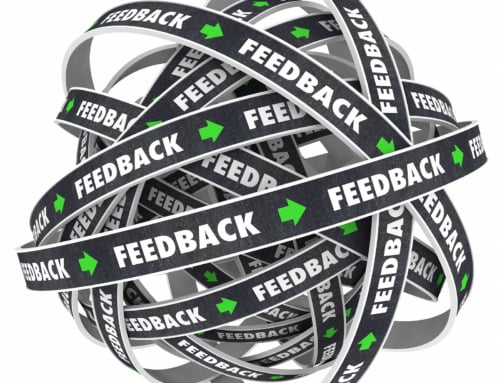Value pricing strategy for advertising agencies? Yes — the time has come.
At several of our AMR network meetings, we’ve had Ron Baker, author of Implementing Value Pricing come speak. Agency owners are fired up after being exposed to Ron’s ideas and leave, ready to either start or continue their transition to value pricing.
The billable hour was introduced by a law firm back in 1919. So were locomotives, dial telephones and prohibition. Trains and phones have certainly evolved thanks to changes in both society and technology, and prohibition was such a bad idea, it went away entirely.
And yet the billable hour remains. One could argue that in many agencies, it’s evolved and now we talk about a blended rate or a modified compensation model. But by and large, most agencies still bill their clients by the hour.
And it’s time for it to go the way of prohibition. Away.
The argument has raged on for years. Agency leaders and clients both know that every agency hour is not spent in the same way or worth the same amount of money. In hour one, an account executive comes up with the strategy that will propel the client into market domination and in hour two, the same account executive writes a memo, reflecting back the action steps identified on a recent phone call.
Same professional. Same client. But hardly the same work or the same value.
Our industry is slowly coming around to the idea that an hour is not like any other hour and we need to start selling our value, not our time. Here are some of the more recent events that suggest we’re heading in the right direction:
- Coca-Cola has innovated a “value-based compensation” approach that pays its agencies based on value, not hours. No longer do they look for, or ask for, hours spent.
- Many well established agencies like Crispin Porter + Bogusky and Anomaly do not bill anything by the hour.
- In early 2010, TBWA/Chiat/Day created a new position – its first global chief compensation officer
- If large agencies that primarily serve big packaged goods brands can move away from the billable hour, why can’t the rest of us? We can and we should.
Why isn’t hourly billing the right choice for clients or agencies?
Hourly billing puts us at odds with our clients in comparison to a value pricing strategy. Agencies want to earn more which means they aren’t motivated to be interested in efficiencies or effectiveness. They are motivated to want to spend more time on a project simply because it earns more revenue. On the flip side, clients want agencies to do the work as quickly as possible. Not as well as possible or with as much innovation as possible.
Hourly billing puts the risk on the clients, which makes them suspicious and wary. If an agency bills by the hour, the client will never know for sure, until they receive the final bill, just how much they are paying. It also forces the clients to scrutinize the invoice, not for the quality of the work provided, but to determine if too many hours were spent on the work.
Hourly billing implies agencies make stuff, not create ideas or generate business solutions. How long does it take to have a brilliant idea? Tough to measure. How long does it take to design a 4-page brochure? Easier. Hourly billing reduces agency work to production versus solutions.
Hourly billing penalizes for technology and other advances. Creating an ad layout has changed dramatically because of the computer. Should agencies be paid less for their work simply because they now have a tool that allows them to do it faster?
Hourly billing means you cannot set the price in advance. Clients are basically left in the dark and potentially holding the bag. It robs them of any/all control over their own budget. That hardly sets the agency up to be the trusted advisor.
Hourly billing means that you’re like every other agency in town. Whereas a value pricing strategy, where the client knows up front exactly what the investment will be and feels good about the value they are receiving for that price — will allow agencies to differentiate themselves from their competitors.
Hourly billing requires incredible administrative effort. Agencies keep time sheets which require inputting and tabulating. Hourly billing is a more complicated way of charging a client, so there is additional accounting/bookkeeping time spent as well. Who ends up paying for that time, one way or another? The client, of course.
Hourly billing means the agency is leaving money on the table or forces them to be dishonest. let’s go back to our example. The Account Executive arrives on a brilliant strategic idea in one hour. The idea will propel the client’s business to the top of their market and increase revenues. Here are the AE’s choices. The idea, when implemented, would be worth $500,000/year to the client. Does she bill the single hour for the idea and leave thousands of dollars on the table? (Surely the client would have paid $10K for an idea worth $500K annually) Or does she lie about how much time it took to come up with the idea?
How do we move to value pricing?
If hourly billing is clearly bad for both the agency and the client, why are we still doing it? It’s probably a combination of habit and easiness. Moving to a value pricing strategy means you’ll need to talk a little differently to both your internal staff and your clients. It’s going to take some effort and time to make the shift.
According to Ron Baker, author of Implementing Value Pricing, these are the guiding principles the best compensation programs include:
- Establish clear goals and objectives up front
- Align marketer and agency interests and priorities
- Establish agreement on key compensation definitions and terms
- Match compensation with the resources required to do the work
- Simple to understand and administer.
- Compensation needs to be fair to both marketer and agency.
In my next blog post — we’ll look at some ideas on how to make this transition to a value pricing strategy. (click to read) But in the meantime, I welcome your questions and comments. Many of the AMR agencies have made the switch and without exception, they all report a stronger bottom line and happier clients. Hard to argue with that combination.






